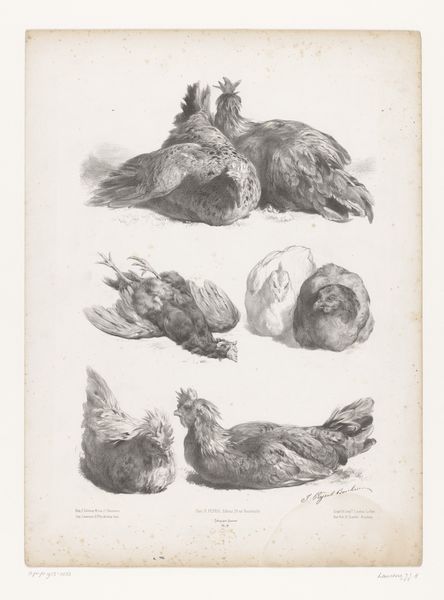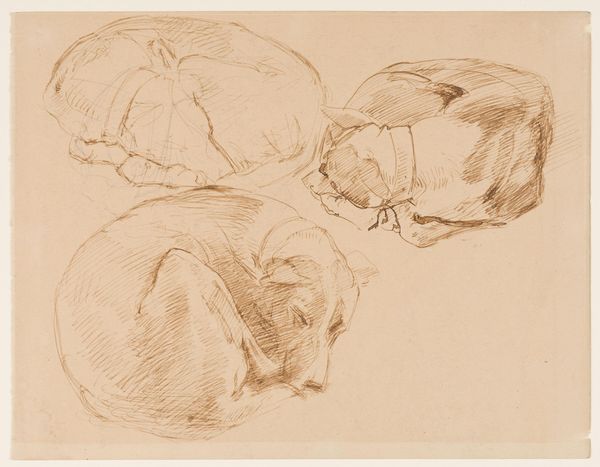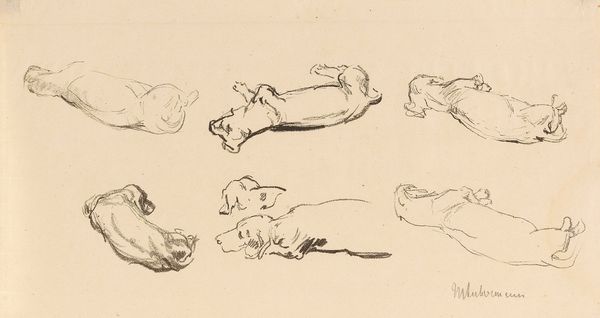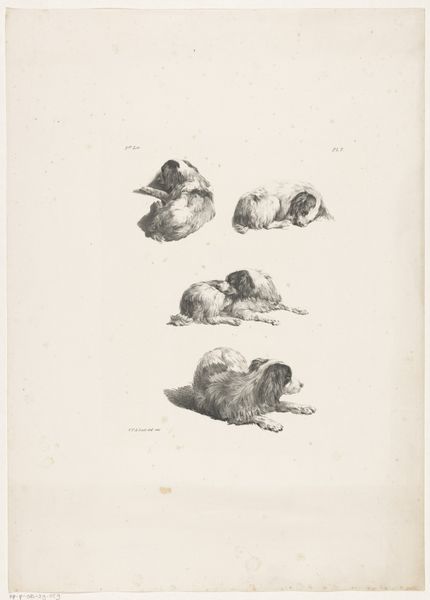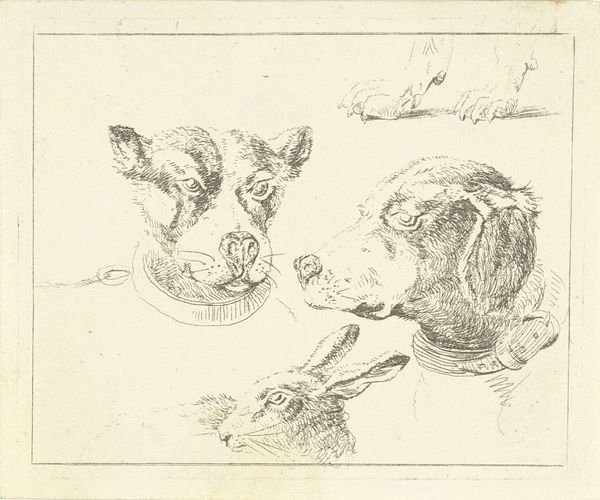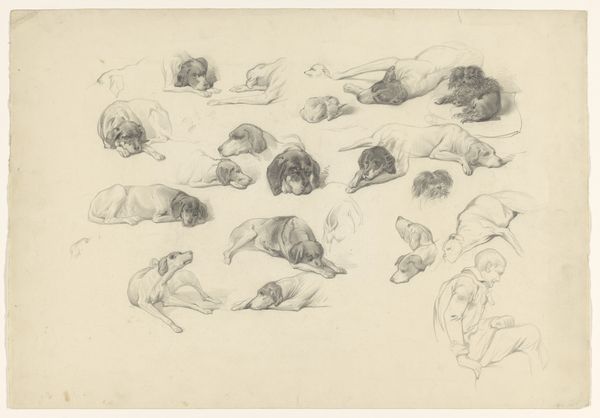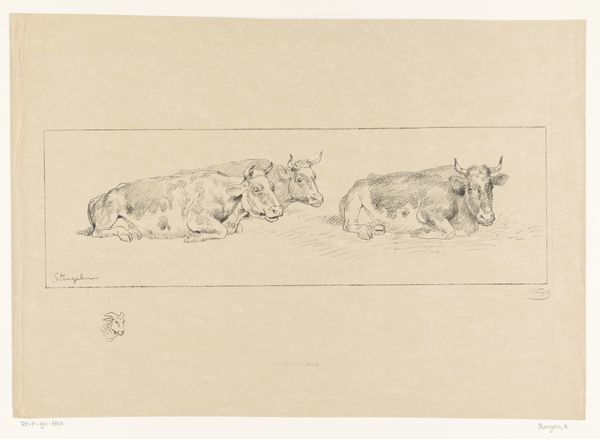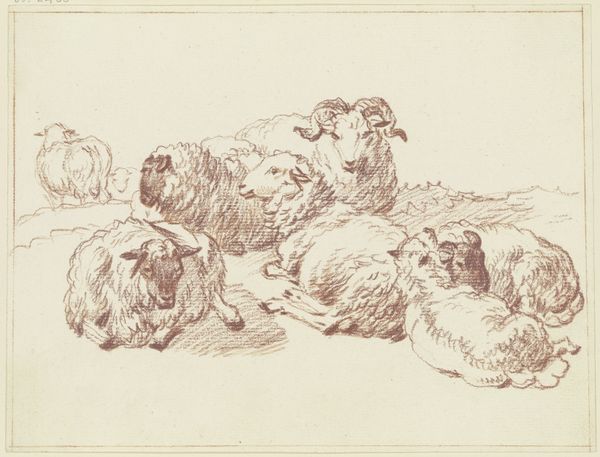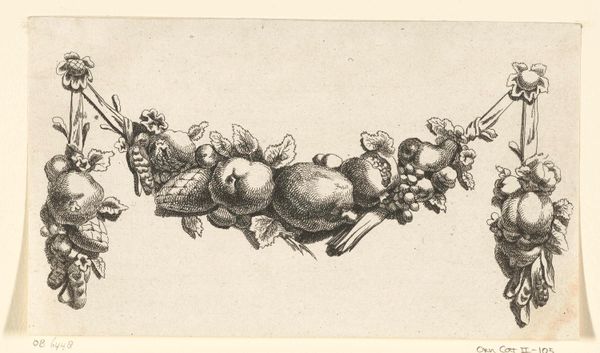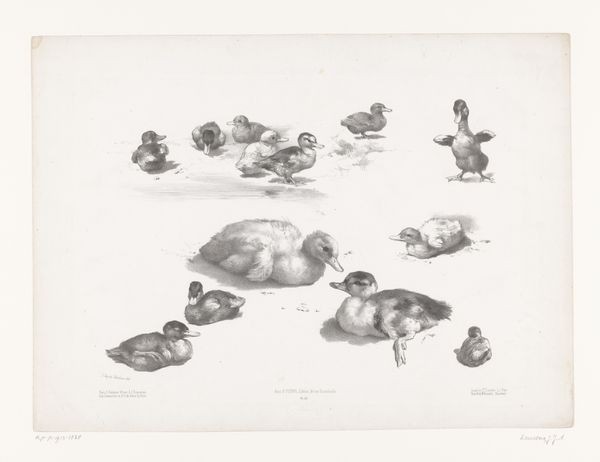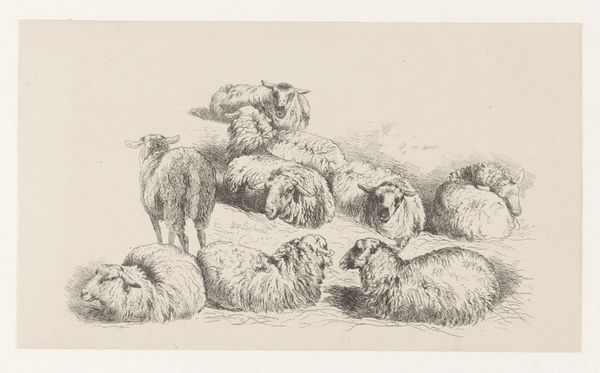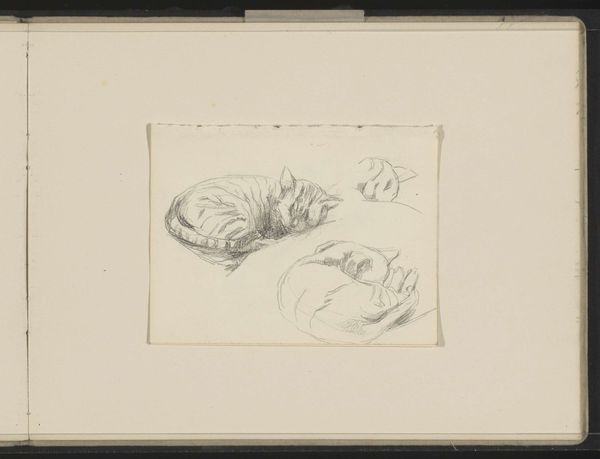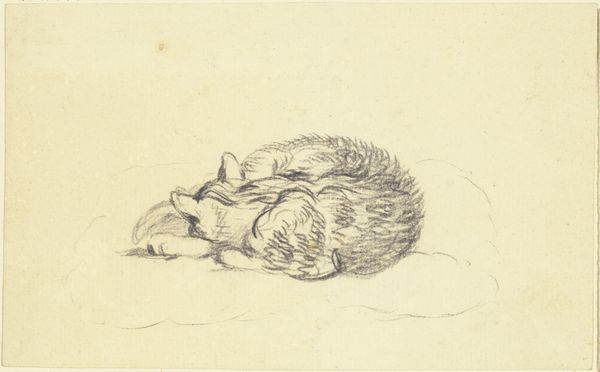
drawing, paper, pencil
#
pencil drawn
#
drawing
#
animal
#
pencil sketch
#
dog
#
paper
#
pencil drawing
#
pencil
#
realism
Dimensions: height 152 mm, width 245 mm
Copyright: Rijks Museum: Open Domain
Curator: This work presents us with a drawing, rendered in pencil, titled "Studies van liggende honden en katten," by Jan van Ravenswaay, possibly created between 1799 and 1869. Editor: Immediately, I notice the overall impression is one of tranquility. There's a gentle softness in the way the animals are rendered, curled up and seemingly at peace. The varied compositions create a soothing rhythm across the page. Curator: Precisely. The drawing aligns with a broader historical fascination with animal studies, prevalent during the 18th and 19th centuries. These depictions often mirrored societal views on domesticity, pets becoming symbolic extensions of bourgeois comfort and sentimentality. The artistic focus wasn't simply on anatomical correctness but on conveying emotions and creating empathetic connections. Editor: I agree. Looking closer, one can also explore themes of vulnerability and care, which, when thinking of pets, intersect with societal ideas about interspecies relationships, and even reflect upon how notions of dominance can be destabilized, challenging typical assumptions about the human-animal binary. I wonder how different contemporary audiences understood the ethics of this representation, or not. Curator: It's fascinating to consider these power dynamics. The seeming simplicity of the artwork may be concealing various considerations in line with emerging discourses of the artist's historical time. The choice of pencil as the primary medium itself also deserves acknowledgement. Unlike more permanent materials, the artist invites a fleeting glimpse, creating a kind of fragile authenticity in its execution, that challenges ideas of realism in art and questions the gaze with a gentle touch. Editor: A point well-taken. I feel that regardless of how a viewer connects with the work on an intellectual or emotional level, they're drawn into considering animals as more than objects of adornment or function. There are subtle elements within this work that echo a period’s relationship to social hierarchies through our non-human peers. Curator: In short, this quiet composition offers more than a pleasing aesthetic. By examining its cultural setting we discover dialogues concerning ethics, sentimentality, and the lens through which we relate to other species. Editor: Right, and by connecting social concerns to visual conventions we can come closer to appreciating this pencil study.
Comments
No comments
Be the first to comment and join the conversation on the ultimate creative platform.
